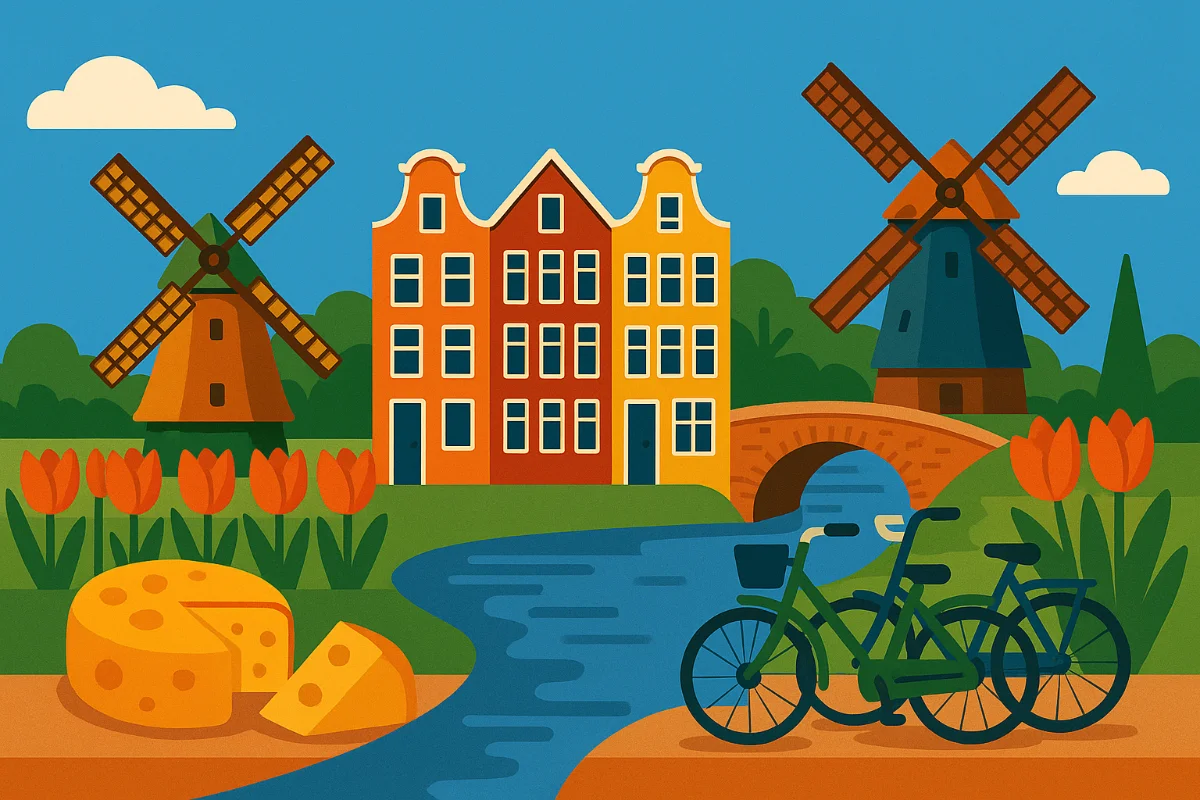Advanced Conjunctions and Discourse Markers (B2)
B2 level involves using a wider range of conjunctions (voegwoorden) and discourse markers (signaalwoorden/structuurwoorden) to connect ideas more precisely, structure arguments logically, and create more sophisticated and cohesive text. This goes beyond the basic linking words of A1/B1.
Types and Functions:
- Concessive Conjunctions/Adverbs (Expressing Contrast/Unexpectedness):
- Review
hoewel(although - subordinating). ondanks(+ noun) (despite)- Example:
Ondanks de regen, gingen we wandelen.(Despite the rain, we went walking.) toch/echter/nochtans(however, yet, nevertheless - coordinating adverbs, often start new sentence or follow subject after inversion)- Example:
Het regende. Toch gingen we wandelen./Het regende. We gingen echter wandelen. desalniettemin(nevertheless - more formal adverb, similar totoch/echter)- Example:
Het was duur. Desalniettemin hebben we het gekocht.(It was expensive. Nevertheless, we bought it.) ook al(even if/even though - subordinating)- Example:
Ik ga, ook al ben ik moe.(I'm going, even though I'm tired.)
- Causal Conjunctions/Adverbs (Expressing Reason/Cause):
- Review
omdat/want(because). aangezien(since, seeing that - subordinating, often starts sentence)- Example:
Aangezien het laat is, ga ik naar huis.(Since it's late, I'm going home.) immers(after all, because - adverb, explains preceding statement, often placed later in sentence)- Example:
Hij zal wel moe zijn. Hij heeft immers de hele nacht gewerkt.(He must be tired. After all, he worked all night.) namelijk(namely, because - adverb, explains preceding statement, cannot start sentence)- Example:
Ik kon niet komen, ik was namelijk ziek.(I couldn't come, because I was ill.) daardoor(because of that, consequently - adverb)
- Result/Consequence Conjunctions/Adverbs:
- Review
dus(so - coordinating conjunction/adverb). daarom(therefore, that's why - adverb)zodat(so that - subordinating, expresses purpose or result)- Example (Purpose):
Spreek luid, zodat iedereen je kan horen.(Speak loudly so that everyone can hear you.) - Example (Result):
Het vroor hard, zodat de sloten bevroren waren.(It froze hard, so that the ditches were frozen.) vandaar(hence, that's why - adverb)
- Structuring/Ordering/Listing Adverbs:
ten eerste/ten tweede/ten derde(firstly/secondly/thirdly)enerzijds... anderzijds(on the one hand... on the other hand)- Example:
Enerzijds wil ik op vakantie, anderzijds wil ik geld sparen.(On the one hand I want to go on holiday, on the other hand I want to save money.) vervolgens(subsequently, then)bovendien/daarnaast(moreover, besides, in addition)ten slotte(finally, lastly)
- Conditional Conjunctions:
- Review
als/indien(if),tenzij(unless),mits(provided that). op voorwaarde dat(on the condition that - subordinating)
Key Differences and Usage Points (B2):
- Subordinating vs. Coordinating: Understanding whether a word introduces a subordinate clause (verb end) or connects main clauses/acts as an adverb (affecting inversion).
- Adverb Placement: Knowing where discourse markers like
toch,echter,immers,namelijk,daaromtypically fit within a sentence. - Register: Recognizing which words are more formal (
desalniettemin,aangezien,wellicht) vs. neutral (toch,omdat,misschien). - Nuance: Choosing the marker that most precisely expresses the logical relationship (e.g., the difference between
want,omdat,namelijk,immers).
Importance for B2:
These markers are essential for constructing complex, well-structured arguments, writing coherent essays and reports, understanding academic or formal texts, and participating effectively in discussions and debates.

